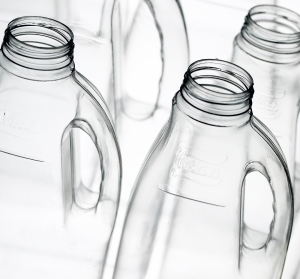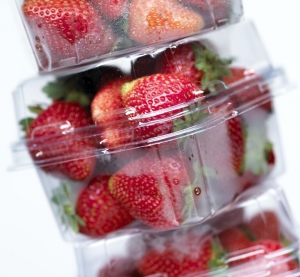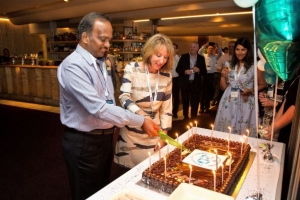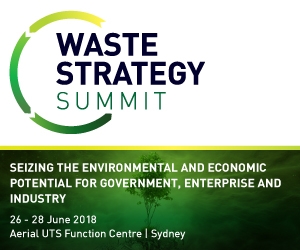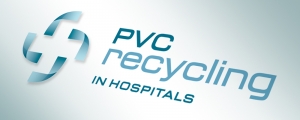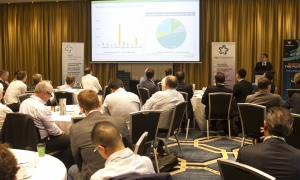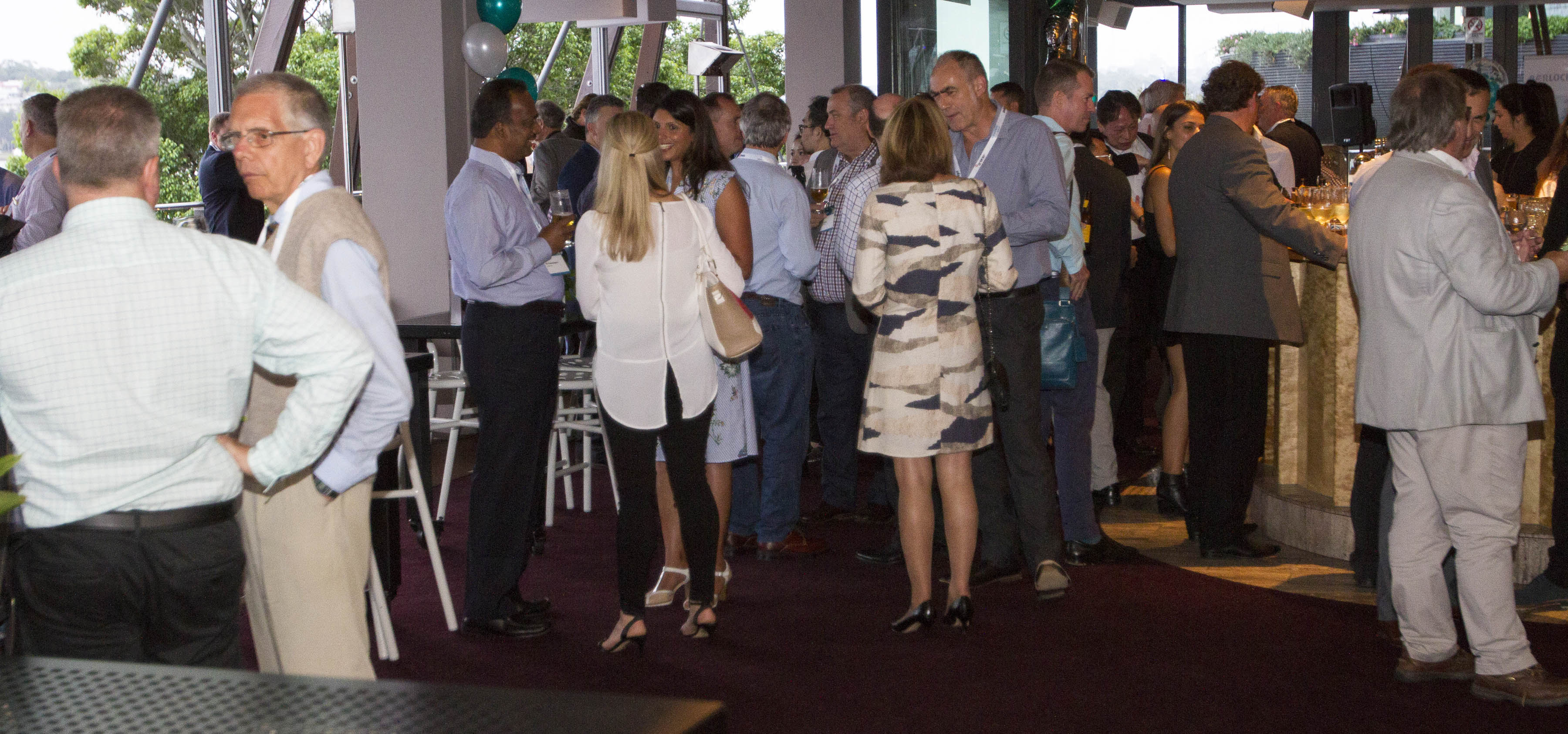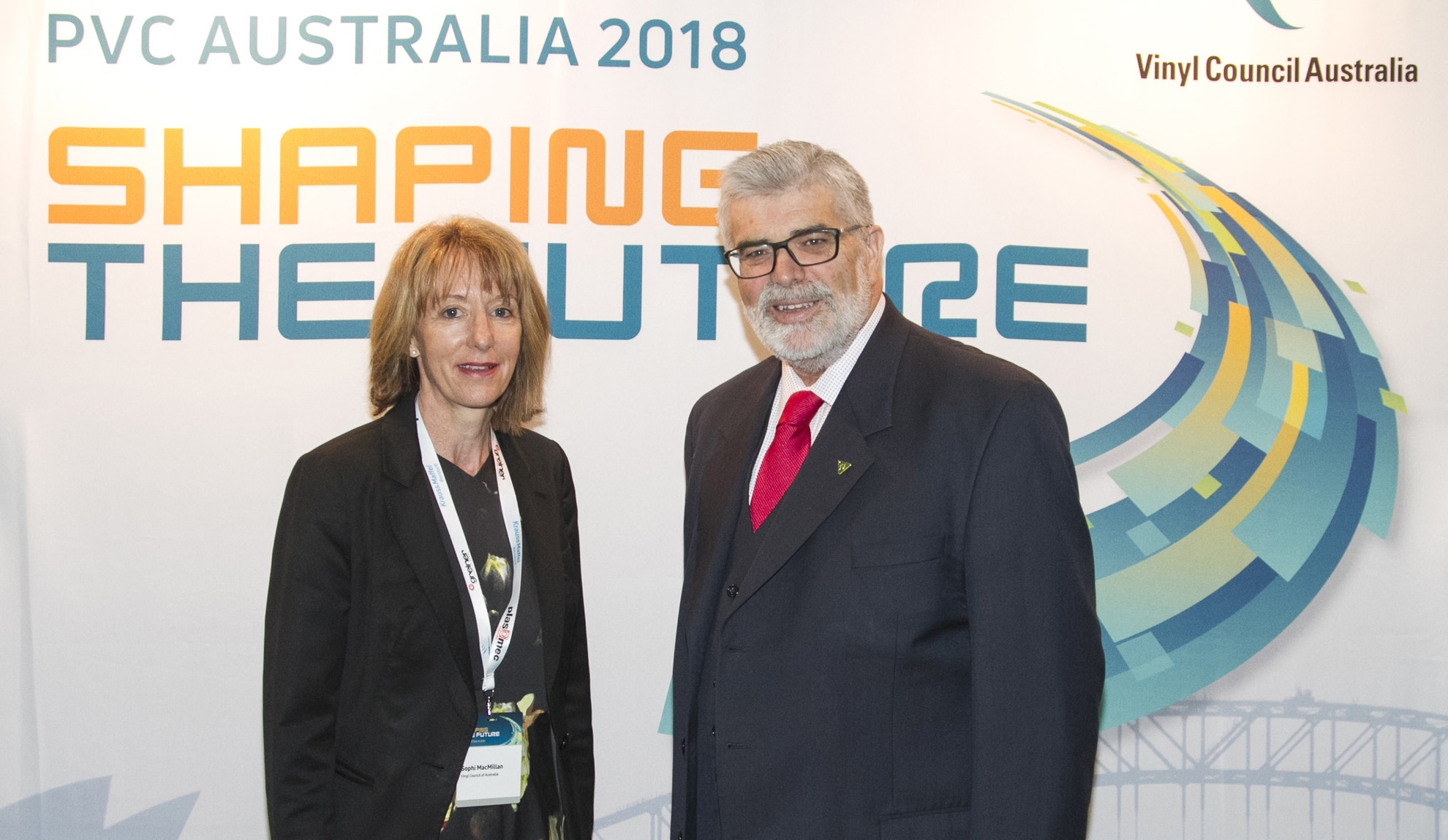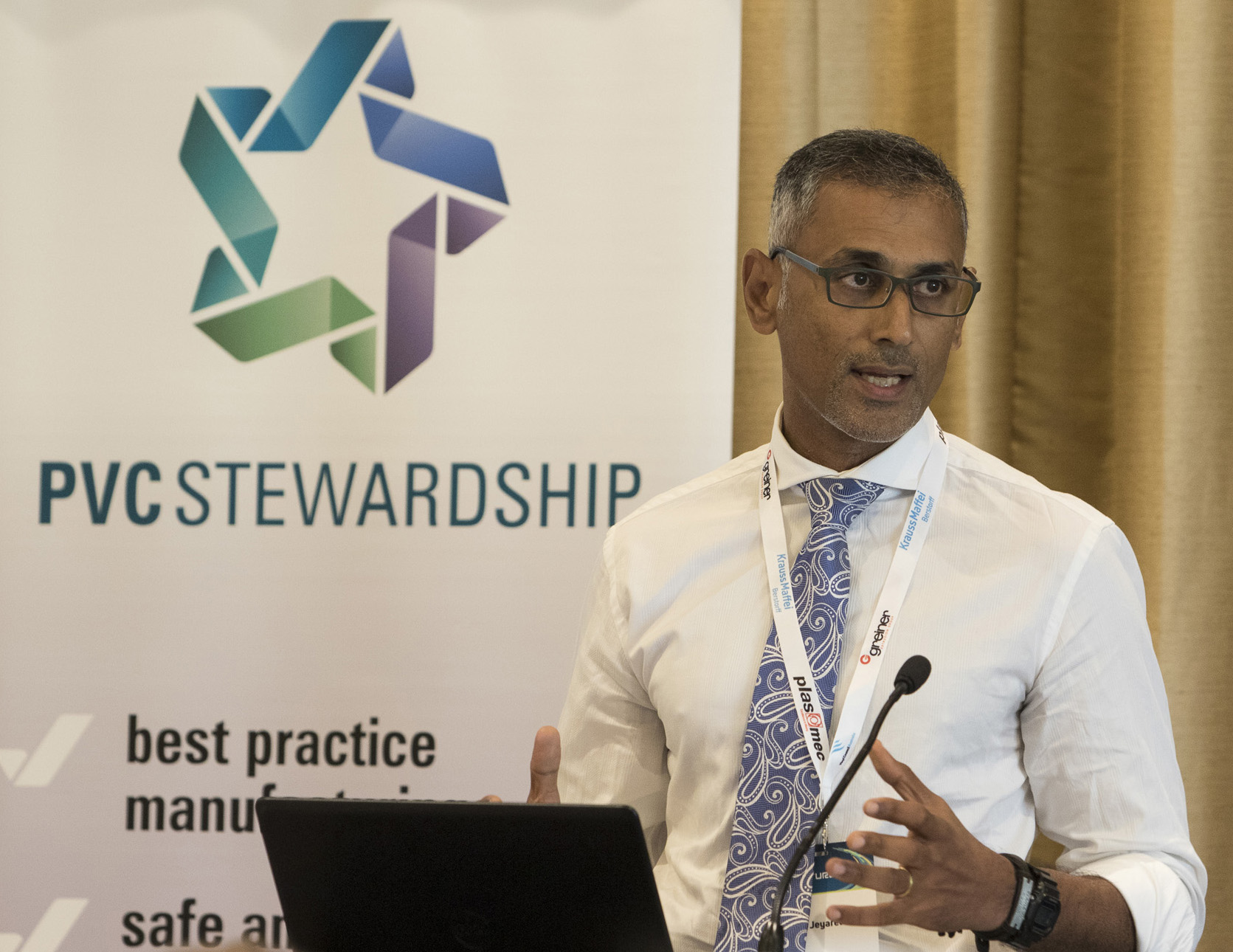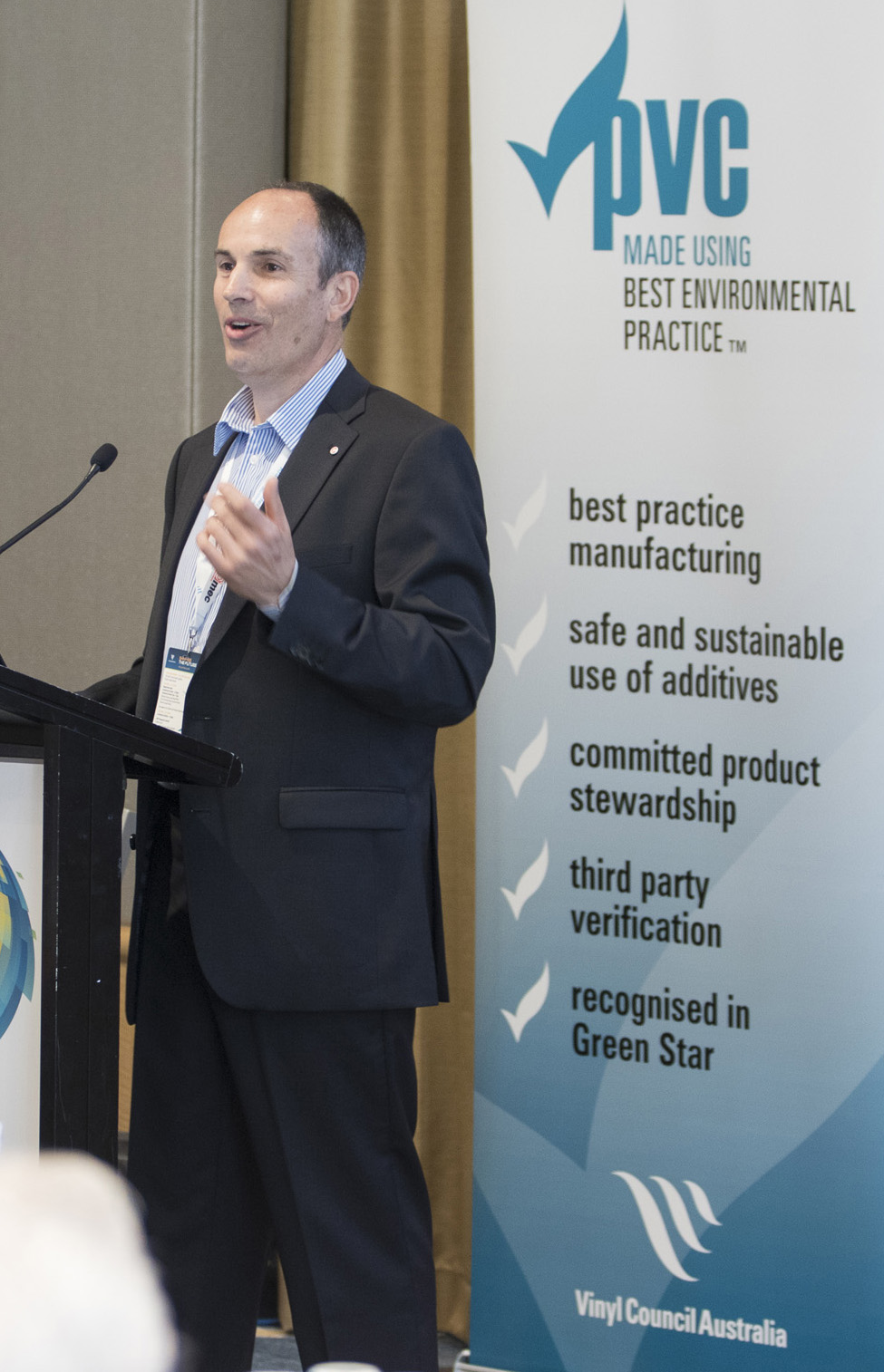PVC Stewardship Program Continues to Grow with the 2024 Survey
The Vinyl Council of Australia (VCA) has published its 2024 PVC Stewardship Program (PSP) Annual Progress Report, showcasing remarkable advancements in sustainability and stewardship across the PVC industry. The report offers a comprehensive overview of the industry’s achievements over the 2024 calendar year, and insight into the year ahead, emphasising its commitment to ethical supply chains, responsible manufacturing, and whole-of-life product stewardship.
The PVC Stewardship Program, established in 2002, is a voluntary initiative developed by the Vinyl Council of Australia aiming to address environmental and health considerations throughout the life cycle of PVC products. It provides a framework for Signatories - companies involved in the PVC value chain, including manufacturers, suppliers, and recyclers - to address specific commitments related to the material’s lifecycle. These commitments cover a broad spectrum, including responsible sourcing of raw materials, the elimination of hazardous additives, minimisation of manufacturing emissions, and the promotion of recycling and waste reduction.
Over the years, the program has set benchmarks and introduced measurable goals to help participants transition to more sustainable practices while ensuring transparency and accountability. By fostering collaboration among stakeholders, the PSP aims to create a circular and resilient PVC industry that aligns with global sustainability expectations.
Key Program milestones in 2024
The 2024 report highlights significant outcomes, including:
- 89% of Signatories achieving at least 80% compliance with program commitments.
- 100% of Signatories reporting compliance at or above 50%.
- A 47% increase in Signatories achieving Gold Excellence outcomes compared to 2023 – 19 (+9 from 2023).
- Notable improvements in areas such as modern slavery, waste reduction, and greenhouse gas reporting.
- 2024 Medical PVC waste collection – 133.3 tonnes (+10%).
- 2024 PVC recyclate consumption – local signatory consumption was down by 6.98% at 2,091 tonnes, but still higher than 2022. It was down due to issues with high quality recyclate streams. On-going programs, such as Pharmacycle and Resiloop will hopefully improve recycling rates in future years.
The report also welcomes the addition of two new Signatories, FireSense and Normet, whose participation strengthens the collaborative framework that underpins the PSP and reinforces the industry’s dedication to building a sustainable, transparent, and circular PVC industry in Australia.
A collaborative approach to sustainability
VCA CEO Jim Coulston expressed his enthusiasm for the continued progress, stating: “The 2024 PVC Stewardship Program results demonstrate the power of collaboration and shared commitment. It’s truly inspiring to see Signatories embrace continuous improvement across the PVC value chain, not only meeting but exceeding evolving sustainability expectations. Their efforts showcase the Australian PVC industry’s capacity to lead in ethical supply chains and responsible manufacturing practices.
“The Vinyl Council of Australia and PSP Signatories recognise the essential role that vinyl products play in advancing a more sustainable future. With their durability, versatility, and resource efficiency, PVC materials support vital sectors including healthcare, construction, and infrastructure. As Australia accelerates its shift toward a circular economy, the PSP positions its Signatories within the Australian PVC industry, to lead – championing material efficiency, sustainable product design, and durability in applications that deliver high societal value.”
Christopher Tate, VCA Sustainability Officer, echoed Jim Coulston’s sentiments, adding: “The PSP is fundamentally about fostering a culture of accountability and progress. The achievements outlined in this report, particularly the rise in excellence outcomes and improved benchmark statuses, illustrate how industry stakeholders are stepping up to meet the challenges of sustainability head-on. We are thrilled to welcome FireSense and Normet into the program, further galvanising our collective mission.”
2024 Report Overview
With 45 Signatories reporting this year, including 19 achieving Excellence and 17 improving their benchmark status, the PSP reflects an industry-wide commitment to continuous improvement. The report underscores the importance of addressing measurable commitments throughout the PVC lifecycle, from raw materials and additives to recycling and waste reduction.
Building a sustainable future
The Vinyl Council of Australia applauds the efforts of all PSP participants whose dedication to sustainability and stewardship continues to pave the way for a greener future. The 2024 PVC Stewardship Program Annual Progress Report stands as a testament to industry innovation, collaboration, and responsibility.
For more information on the PVC Stewardship Program and to view the 2024 Annual Progress Report, please visit https://www.vinyl.org.au/our-progress.
Australian and US vinyl industry bodies explore sustainability program reciprocity
The Vinyl Council of Australia (VCA) and the United States Vinyl Sustainability Council (VSC) have signed a memorandum of understanding (MOU) to explore a pathway to reciprocity between the two sustainability programs by sharing best practices and collaborating on sustainability program development.
Collaboration between the VCA’s PVC Stewardship Program and VSC’s +Vantage Vinyl™ program seeks to promote global harmonization, broaden recognition of industry leaders, and increase industry participation in these sustainability programs.
“While circumstances vary regionally, sustainability is a global issue and vinyl products participate in a global market,” said Sophi MacMillan, VCA Chief Executive. “It is in the best interest of the industry and society to work across borders to help the vinyl industry to continue to make progress.”
Trade association-led sustainability programs serve an important function to advance voluntary improvements in the industry. Working together, member companies can share best practices leading to continuous improvement throughout the industry.
“Many of our members do business throughout the world,” said Jay Thomas, VSC Executive Director. “Developing a pathway to reciprocity between the various sustainability programs will foster progress by easing the administration burden on companies and encouraging more participation. Increased program participation is a key factor in advancing the sustainability of the industry.”
Companies participating in the PVC Stewardship Program and +Vantage Vinyl programs agree to transparent voluntary commitments and guiding principles of sustainability that are measured and reported on an annual basis. The programs are designed to be inclusive for companies at any stage of the sustainability journey but encourage continuous improvement. The overall performance of member companies is reflected in annual sustainability reporting.
To learn more about the PVC Stewardship Program visit https://www.vinyl.org.au/sustainability/stewardship and https://vantagevinyl.com for more information about +Vantage Vinyl.
###
About the Vinyl Sustainability Council
The Vinyl Sustainability Council (VSC), founded in 2016 in partnership with the Vinyl Institute, is a council created to advance the vinyl industry’s efforts in addressing sustainability in the United States. The VSC is a collaborative platform for companies, organizations and other industry stakeholders to come together to create a sustainable development path for the industry. For more information, please visit vantagevinyl.com/vinyl-sustainability-council/.
The value of product stewardship
In the current business climate, the application of product stewardship has much to offer to individual businesses, industry collectives and governments seeking to drive sustainable economic growth.
This has been brought into a sharper focus in recent times due to the global economic downturn triggered by the covid-19 pandemic which has led many businesses and governments to recognize the level of economic dependence they have on offshore suppliers and markets, including for waste materials. This, coupled with the impact of the China National Sword policy, has the potential to stimulate new ways of thinking and smarter approaches to business and economic management and prosperity. One such approach, and one that has considerable merit, is product stewardship.
Product stewardship is defined as “the principle that everyone involved in a product supply chain - including raw material and component suppliers, product and packaging manufacturers, brand owners, recyclers, governments and consumers - share responsibility for minimising environmental impacts over that product’s life cycle” . Product stewardship can therefore make a significant contribution to the circular economy. Stewardship, at its best, takes a life cycle thinking approach to ensure products and materials are designed to avoid adverse impacts on society and the environment and that the resources consumed are retained within the productive economy in a cyclical manner.
The Vinyl Council, through its PVC Stewardship Program, has been at the forefront of this journey in Australia for quite some time. The Program commits Signatories to implement life cycle thinking and consider the whole-of-life impacts of the products that they introduce to the marketplace. This encompasses a wide range of considerations including raw materials and resources, embodied carbon, toxicity, and lifespan. This has resulted in the sector producing products that deliver proven environmental benefits, as a function of their excellent performance, durability, low waste generation and affordability which has been borne out through numerous lifecycle assessments carried out globally and locally.
Furthermore, when stakeholders collaborate, opportunities arise for better resource management, which in turn can stimulate local employment and deliver greater security and access to the inputs needed by local manufacturers. The Vinyl Council is pleased Federal and State Governments have recently announced funding programs which may provide opportunities to bring together innovators and entrepreneurs to develop new systems and infrastructure, or products, which will lead to enhanced recovery and reprocessing of greater volumes of PVC for the domestic market.
The Council firmly believes that a product stewardship focus can translate into tangible financial and reputational benefits for those organisations that embrace and commit to implementing product stewardship approaches. These benefits are evident both in the public realm but also in the disciplines it enforces on organisations in terms of how they manage and monitor their day to day operations.
Furthermore, acting as leaders through product stewardship delivers:
- Differentiation in the marketplace that leads to competitive advantage. Establishing stewardship credentials through independent third-party schemes, as the PVC program does, demonstrates not only a company’s commitment to continuous improvement but may also differentiate it from competitors. Increasingly, down-stream customers want to know how their suppliers manage their environmental affairs. Independent and third-party verified schemes enable those involved to spruik their credentials and demonstrate their accountability and
transparency. - Access to markets. At present, governments at all levels are reviewing their procurement frameworks and policies to examine how these systems can be used to support and stimulate circular economy objectives, including boosting demand for recycled content products. In doing so, governments are likely to preference those businesses who are members of recognised and reputable product stewardship schemes. This will facilitate access to markets for those businesses participating in these stewardship schemes.
- Reducing liability. A company is best positioned when it understands its products holistically. Product stewardship, particularly a life cycle-based scheme, fosters a proactive approach within businesses to consider the supply chain risks and the various lifecycle stages of the products they are releasing into the market. It therefore reduces risk and better prepares them for future challenges.
- More effective business management. Implementing product stewardships schemes within businesses imposes disciplines around establishing appropriate systems that enable organisations to measure performance, monitor outcomes and control direction. This can aid in minimising risks, enhancing profitability as well as in fulfilling obligations in relation to regulatory compliance.
- Strengthening organisational culture. Embedding environmental and social sustainability as core values of a business’ operations can support buy-in and pride from its workforce.
With a significant track record of driving change through the industry since 2002, the PVC Stewardship Program is an example of voluntary stewardship bringing benefit to both industry and community.
If you are an Australian business operating in the vinyls product sector and are interesting in learning more about our PVC Stewardship Program, please don’t hesitate to contact us on 03 9510 1711.
For our latest results, please check out our annual Progress Report.
Recyclable PVC plays an important technical role in packaging
Versatile and recyclable, PVC (vinyl) provides significant benefits as a specialist packaging material; yet recovering this material for sustainable reuse presents challenges. Sophi MacMillan, Chief Executive of the Vinyl Council of Australia offers some practical solutions.
For more than half a century, PVC or vinyl has been used on a global basis to meet specific functional food and beverage packaging needs. It suits many different food types, offering excellent clarity, unsurpassed physical properties, including heat tolerance, controllable gas and moisture vapour transmission capabilities and exceptional sealing performance.
Most vinyl is used in long life products, particularly building products from pipes, cabling and flooring to window frames and wall profiles, all of which are recyclable. Vinyl used in packaging – such as bottles, thermoformed punnets, pharma blister packs and cling films - represents about 6% of the material’s usage in Australia.
In these applications, vinyl plays an important role in protecting food from contamination and keeping it fresher for longer, while helping to reduce unnecessary food waste. It also protects a variety of high value consumer products, from pharmaceuticals to toys, razors and batteries. In healthcare, vinyl is used in many critical medical items, such as intravenous fluid bags and oxygen hoses. Although a small volume polymer packaging material, it has specific, necessary uses with a relatively low environmental footprint compared to alternatives.
Without doubt, vinyl has revolutionised the way we live our modern lives, helping to deliver safer healthcare, protecting our food and delivering drinking water. Given the high profile of plastics in the media, attention must focus on how we treat this recyclable material at end of life and recover it for beneficial reuse, including energy.
Post-consumer rigid PVC packaging is collected by most local councils around Australia. With existing infra-red sorting technologies, it can be sorted into a defined stream, reprocessed and used as recyclate for use in new products manufactured in Australia. However, at just over 5% of all plastic packaging materials (industrial and consumer) used in Australia, vinyl packaging is only a small proportion of total household packaging waste and is often considered uneconomically viable to sort and recycle.
The 2017-18 recycling rate of PVC packaging waste in Australia is reported to be 7.2% - which is low when compared to the overall average rate of 20.6% for all plastic packaging. (Source - 2017-18 Australian Plastics Recycling Survey published by Envisage Works, 30 January 2019). Nevertheless, clean, separated vinyl waste has value and collection has been actively encouraged by industry.
Clean, separated vinyl waste is relatively easy to recycle, requiring less energy for reprocessing than all other polymers. Using recycled vinyl in new products replaces virgin material and reduces carbon emissions associated with manufacturing virgin vinyl by about 80 to 85%, significantly lowering the carbon footprint of new vinyl products.
While technology exists to identify and sort PVC, few Materials Recovery Facilities (MRFs) are currently operating these systems because of ‘low volumes’. Yet substitution of a small handful of PVC packaging items would almost certainly lead to higher environmental impacts and higher waste volumes in terms of food waste, product damage or alternative non-recyclable composite packaging materials. It will also not remove PVC entirely from the waste stream, so an effective solution to remove PVC ‘contamination’ would be required regardless.
In my view, we need to consider whether the system of use is ‘open’ or ‘closed’ and how these waste plastics can be collected and recovered effectively in both systems for processing into new products, giving it a value as a raw material.
Examples of a ‘closed’ approach might be a major event, an airline or a hospital, where all the plastic waste can feasibly be collected, sorted, segregated and ultimately recycled as single, clean polymer waste streams. An excellent example of PVC packaging being collected and recycled is that of IV bags in healthcare. Schemes in Australia (our PVC Recycling in Hospitals Program), South Africa, Thailand and the UK successfully demonstrate that this material can be separated at waste source, collected and recycled into useful new products.
Conversely, in an ‘open’ system, such as take-away restaurants, all ‘control’ of these waste plastics is lost once single-use plastic walks out the door.
As a material that meets so many of our modern-day needs effectively, we should give careful consideration to how we treat and reuse PVC at end-of-life.
Solution options should cover:
- Separating PVC at source in ‘closed’ consumption systems to achieve a clean waste stream, such as the hospital PVC recycling program. This requires committed collaboration by brand owners, users and the PVC packaging industry to explore the feasibility of establishing collection and recycling schemes, and ultimately, end markets
- Using existing or new techniques and technologies to better separate PVC from co-mingled waste streams at a greater number of Secondary Sorting Facilities around the country, after the removal of higher volume PET and HDPE
- Researching, assessing and supporting the commercialisation and adoption of new technologies – such as chemical separation – to improve production of clean, single material streams for reprocessing
- Developing Waste to Energy projects for co-mingled residues
Demand is growing from manufacturers to increase the use of vinyl recyclate and signatory companies of our long-established PVC Stewardship Program are publicly committed to using recyclate in new products where standards permit.
Through greater collaboration between industry, manufacturers and the wider waste and recycling sector, the vinyl industry can be part of the solution and transform our plastic waste into a sustainable future resource.
The recyclability of PVC packaging in Australia
PVC (vinyl) packaging - designated by the Plastics Identification Code number 3 - is recyclable.
Vinyl has long been used on a global basis to meet specific functional food and beverage packaging needs. It offers users excellent clarity, unsurpassed physical properties including heat tolerance, controllable gas and moisture vapour transmission capabilities and exceptional sealing performance. Unlike many other materials, Vinyl can be formed into a myriad of complex and functional forms to suit many different food types.
Most vinyl (>85%) is used in long life products, particularly building products, such as potable water pipe, conduit, cabling, flooring and window profiles, all of which are also recyclable in Australia. Vinyl used in packaging represents approximately 5 percent of the material’s usage in Australia.
Vinyl packaging is commonly used for clear, handled bottles such as for cordials; clamshells to protect fresh fruit, vegetables, bakery and other fresh food items; and as very light gauge film for wrapping and protecting fresh meat, produce, dairy and deli products. Vinyl plays an important role in keeping fresh food fresh, and in turn benefits consumers by protecting the fresh food from early spoilage or other forms of undesirable food contamination.
Vinyl is also used as secure blister packaging for high value products such as pharmaceuticals, batteries, razors, toys, and an array of other consumer products. An important material for healthcare, Vinyl is used in many critical medical items, such as intravenous fluid bags and body fluid hoses, used in the delivery and management of blood and other fluids in operating theatres and similar critical care situations.
Post-consumer PVC packaging is collected by most local councils around Australia and by industry directly from the healthcare system. It can be sorted into a defined stream, can be reprocessed and used as recyclate for use in new products manufactured in Australia. However, at just over five percent, vinyl packaging is only a small proportion of all plastic packaging materials (industrial and consumer) used in Australia.
The 2017-18 recycling rate of PVC packaging waste in Australia is reported to be 7.2% - which is low when compared to the overall average rate of 20.6% for all plastic packaging. (Source - 2017-18 Australian Plastics Recycling Survey published by Envisage Works, 30 January 2019).
Clean, separated vinyl waste has value and collection is actively encouraged by industry.
Rigid vinyl packaging
Rigid vinyl packaging such as bottles and thermoformed packaging is recyclable when collected from kerbside and sorted from other polymers and packaging materials. Most councils around Australia have included these products in collections for many years.
Post-consumer vinyl bottles are separated out where manual sorting systems operate at Materials Recovery Facilities (MRFs) and sent to recyclers. The Vinyl Cycle bottle recycling program that operated for many years (until 2012) demonstrated that a recycling rate of over 50% was achievable when vinyl bottles were manually sorted for recycling, however very few MRFs operate such systems today.
Optical sorting technologies exist based on Near InfraRed cameras that can identify polymer types, including vinyl, and colours (except black). These achieve high purity streams, generally 93-96% for most polymers. In Australia, however, use of such technologies has largely been limited to identifying the dominant two packaging polymers only – PET and HDPE – despite local demand for recovered vinyl for remanufacturing within Australia.
Post-industrial rigid vinyl packaging materials, such as thermoforming web scrap, is sought after by recyclers for use in other products.
Flexible vinyl packaging
A successful program currently operates across Australia’s healthcare sector. The ‘PVC Recycling in Hospitals’ scheme operates in over 170 healthcare facilities in Australia and New Zealand and collects approximately 15-20 tonnes a month of vinyl intravenous bags, tubing and oxygen masks. This material is reprocessed locally into new, long-life products. The success of the program is, in part, due to the separation at source of the vinyl products, reducing contamination from other polymers and materials.
Unfortunately, there is little collection and recycling of post-consumer films and food wrap, regardless of polymer type. This is due to a number of reasons - high contamination from dirt, food waste and other non-plastic materials and contaminants; the wide range of polymers and other materials used to manufacture films, such as mono layer, multilayer and mixed polymer films; and the risk of films generally entangling and damaging traditional processing equipment at the MRF.
Nevertheless, the vinyl film industry in Australia has taken appropriate actions to reduce raw material use through down-gauging films and continually seeking ways to reduce the life cycle footprint of these products by way of material selection.
Benefits of sorting and recycling vinyl packaging
Clean, separated vinyl waste is relatively easy to recycle as vinyl is a thermoplastic. Vinyl’s melting point is relatively low which means less energy is required for reprocessing vinyl than that of other polymers, but this has been the reason it is considered a ‘contaminant’ in other polymer streams as it burns at higher temperatures.
Industry does not see vinyl as a contaminant; we see it as a resource. There is very good reason therefore to implement technologies and systems to separate vinyl early in the kerbside waste sorting process.
Using recycled vinyl in new products replaces the use of virgin vinyl compound and reduces the carbon emissions associated with manufacturing virgin vinyl by about 80-85 percent. This significantly lowers the carbon footprint of new vinyl products.
Local manufacturers of vinyl products have indicated that they have an appetite to increase the use of vinyl recyclate if reliable, continuous sources of recyclate are made available. Signatory companies to the long-established PVC Stewardship Program are publicly committed to use recyclate in the products they supply to the market unless product standards prohibit it.
The Council therefore welcomes emerging initiatives by MRFs to separate rigid vinyl packaging and some other flexibles for local reprocessing and reuse in Australia.
VersrTile: recycling vinyl coated farbrics
In 2018, the Victorian state’s Metropolitan Waste and Resource Recovery Group (MWRRG) provided a $20,000 grant to part fund an investigation into the feasibility of recycling vinyl coated fabrics into roof tiles, one of the product concepts identified in Porject ReMake. The VersrTile project enabled an expert multidisciplinary team led by the Vinyl Council to design and test reprocessing techniques and form prototype roof tiles made from waste billboard skins. The project outcomes included testing the manufactured sample tiles, which found the tiles could resist weathering as required under applicable standards; however, further development is required on the tile prototypes to meet mechanical strength tests required for roof tiles.
A preliminary business case has been developed to understand the financial and production factors that will be required to manufacture these roof tiles economically and to assess their commercially feasibility. The significance of this project is that it identifies a potential reuse of a composite material into a durable, high volume product without the need to separate the polyester fibre from the vinyl.
Read our report VersrTile: Vinyl-Coated Fabric to Roof Tile Recycling Project (2018) here.
Vinyl Council of Australia celebrates 20th anniversary
The Vinyl Council of Australia is celebrating its 20th anniversary this year amid on-going progress in guiding the continuous improvement and sustainable development of the Australian PVC industry.
Founded in 1998, the nation’s peak association for the PVC value chain has made great strides in changing perceptions and advancing the material’s sustainability over the past two decades.
Key achievements include the 2002 launch of the PVC Stewardship Program (PSP) that has been fostering advancements in innovation and sustainability throughout the Australian PVC industry, for both locally-made and imported products and the introduction of the Best Practice PVC third party accreditation scheme for products.
Recognised in rating tools such as Green Star and public and private procurement policies, Best Practice PVC requires strict compliance and has driven change through product global supply chains.
Acknowledged as one of the longest-standing product stewardship programs in Australia with a full life cycle approach, the PSP currently has 47 Signatories representing the majority of the Australian PVC industry. All are committed to driving positive measurable change in five key areas, such as transparency, resource efficiency and safe and sustainable use of additives.
The information and data collected through the program has helped inform industry and stakeholders, influence product design and ensure the Australian PVC industry continues to innovate.
Industry successes include the most stringent manufacturing benchmarks for raw material suppliers; a 98% reduction in lead additive use by Signatories since 2002; compliance by 90% of Signatories with the PVC Industry Energy and Greenhouse Gas Emissions Charter; growing use of PVC recyclate in products placed in the market; research and development of innovative solutions for recycling PVC coated fabrics; and initiation of the recycling of medical devices. As the program evolves year to year, industry is driven to improve performance and reduce the environmental footprint of vinyl products along the entire value chain.
The Council’s thriving PVC Recycling in Hospitals program now operates in 160 hospitals throughout Australia and New Zealand, recycling more than 200 tonnes of high-grade PVC waste each year into new goods, such as playground mats and garden hose. Design of new product applications for the recyclate is currently being explored.
Vinyl Council Chief Executive Sophi MacMillan comments: “We have made major progress over the past two decades with some significant breakthroughs, both in how PVC is perceived and how it is increasingly being specified for sustainable applications. Through our ‘whole of life approach’ to PVC stewardship, today’s vinyl is a sound material choice.”
We have achieved this as an industry, continues Sophi, by ‘working together through a public voluntary commitment to address key aspects of the product life cycle based on credible science and life cycle assessments’.
As a low carbon and durable plastic, PVC provides solutions through its track record of stewardship, alignment with several global Sustainability Development Goals and its potential for circularity. Each tonne of recycled PVC will replace about one tonne of virgin PVC compound in new products, consuming 80% less energy and reducing carbon emissions.
In providing the platform to share information and engage with stakeholders, the PSP has developed partnerships and collaborations that are driving change through the industry and better understanding of supply chains for vinyl products placed on the Australian market.
Sophi adds: “In our 20th anniversary year, we are immensely proud of how far we’ve come on our continuous and evolving journey towards a circular economy for vinyl.”
Taking the ‘squiggle’ out of developing recycling solutions
Fostering innovation in recycling and encouraging circularity of materials in the economy is a challenging and complex endeavour, The Vinyl Council has been engaged in such activity for several years, working with members of the vinyl value chain to facilitate solutions to end-of-life PVC products.
Industry Recycling Strategy Manager, Helen Millicer will be presenting on this topic at the 2018 Waste Strategy Summit to be held in Sydney 26-28 June.
On 28 June, in a presentation entitled 'Pilots and Collaborators – taking the ‘squiggle’ out of developing recycling solutions', Helen will share how the Council works to collaborate widely with stakeholders to develop innovative approaches to waste recovery and recycling. As an example, she will outline the challenges and successes of initiating and managing a project to divert a complex end-of-life vinyl product from landfill and find beneficial uses for the raw materials.
Her talk will cover:
• How to implement concrete and effective recycling solutions in organisations
• Understanding the importance of collaboration between industries, organisations and governments in developing recycling strategy
• Learning how to take maximise the chance of success and take the 'squiggle' out of the process
• Some of the exciting possibilities of PVC recycling in Australia
Helen will then participate in a panel session with a number of experts.
Made locally. Recycled locally. PVC Recycling in Hospitals program leads the way in circular economy
The Vinyl Council of Australia wishes to clarify some recent reports about its increasingly successful PVC Recycling in Hospitals program.
Managed by the Vinyl Council of Australia and its member partners in the program – Baxter Healthcare, Aces Medical Waste and Welvic Australia – the PVC Recycling in Hospitals program is a local initiative to redirect high-grade PVC waste from hospitals to local recycling companies to be reprocessed in Australia and sold to Australian and New Zealand manufacturers who produce new, finished products such as garden hoses and outdoor playground matting.
Unlike other commercial and residential programs in Australia and New Zealand, the PVC Recycling in Hospitals program processes and recycles PVC material here in Australia, closing the loop on the manufacture, supply and disposal of PVC products in hospitals.
Thanks to the support and enthusiasm of hospitals, nurses and other healthcare professionals in Australia and New Zealand, the PVC Recycling in Hospitals program has now grown to more than 130 hospitals.
Over the past 12 months almost 200 tonnes of PVC waste from hospitals has been diverted from landfill to recycling.
At a time when residential recycling programs are under enormous pressure due to significant changes to waste management policies in China and its decision to restrict the importation of unsorted waste from other countries, the Vinyl Council confirms its PVC Recycling in Hospitals program remains unaffected by these changes in international waste management. We are proud that our industry program continues to lead by example as a local, innovative waste management and recycling program.
To support the growth of the PVC Recycling in Hospitals program, Welvic made a significant investment in modern recycling equipment last year and has created six new jobs at its Victorian PVC compounding plant.
Baxter Healthcare, a local manufacturer of hospital IV fluids bags, has also invested in education and training in the healthcare sector and provides logistics support.
"We seek to assure the healthcare sector and its staff that the PVC Recycling in Hospitals program is strong and is not affected by China’s ban on unsorted materials. All the medical waste collected under the program has always been, and continues to be, reprocessed and used here or in New Zealand," said Vinyl Council's CEO Sophi MacMillan.
"This example-setting program is growing precisely because it is supported by the local vinyl manufacturing industry and the healthcare sector as product consumers. It is a clear demonstration that circularity within Australia can work."
The Vinyl Council is calling on other industries and manufacturers to support the program and for measures to strengthen the local recycling industry.
"We would like to see greater support and incentives from government to encourage local design and manufacturing of products that use recyclate, to drive demand for recyclate use in Australia,” said Sophi.
“And we’d like policies to encourage procurement of those products that demonstrate they are closing the circularity gap in Australia.”
Innovation and sustainability progress unveiled at PVC AUS 2018
Advances in technology, sustainability and product stewardship over the last 20 years have helped to transform the PVC sector across Australia and turn vinyl into a ‘sound choice of material’, delegates learnt at PVC AUS 2018: Shaping the Future.
Organised by the Vinyl Council of Australia in its 20th anniversary year, the two-day Sydney event in March shared latest developments in PVC formulations and best practice manufacturing that demonstrate the sector’s commitment to continuous improvement.
The event was supported by headline sponsors Austria-based Greiner Extrusion GmbH, Krauss-Maffei Berstorff from Munich, Germany and Italian machinery manufacturer PlasMec.
Vinyl Council Chief Executive Sophi Macmillan commented: “We are driving continuous improvement through the industry in Australia, for both locally-made and imported products, and this is driving change through PVC product supply chains.
“One of the longest standing product stewardship programs in Australia, our PVC Stewardship Program is leading in many areas. These include its life cycle approach, specific and measurable commitments, transparency, and focus on continuous improvement across the value chain.”
Currently 47 companies are Signatories to the Program, representing the majority of the Australian PVC industry. These companies include manufacturers of PVC resin, additives and end-products, PVC compounders and product importers. Major PVC applications represented in the Program include companies manufacturing or importing packaging, cables, windows, flooring, pipes, formwork, medical products, and profiles.
Among the industry successes Sophi highlighted were: a 99.45% reduction in lead additive use since 2002, the Signatories’ 90% compliance with the PVC Industry Energy and Greenhouse Gas Emissions Charter and several PVC recycling initiatives covering advertising banners, commercial vinyl flooring and medical devices.
In his US perspective on ‘Vinyl for a Purpose-Driven Sustainable Development’, Cristian Barcan, VP Sustainability & Industry Affairs at the Vinyl Institute covered key sustainability progress. This includes a 90% reduction in VCM emissions since 1983 and the elimination of lead and cadmium stabilisers. More than 450,000 tonnes of PVC are recycled annually in the US.
Cristian observed: “Unprecedented challenges lie ahead, we have to change. We don’t have three planets of natural resources; doing more with less is needed to address the needs of the next generation.”
Dr Tracy Wakefield of Plustec Pty Ltd outlined the benefits of uPVC Tilt n Turn windows and how their functionality, in terms of low-maintenance, ease-of-cleaning, security and superior ventilation are the future of windows in Australia – and crucially, suit its climate.
With 85% of windows installed in Australian homes still single-glazed, Gerhard Hoffmann of Greiner Extrusion emphasised how the insect-proof, thermally-efficient, 100% recyclable and corrosion-resistant properties of uPVC windows represent a cost-effective fenestration opportunity.
Advances in formulations were a key topic with Dane Tallen of stabiliser manufacturers Baerlocher exploring how calcium-based solutions could provide cost-effective and sustainable solutions for injection-moulding applications; while Dexter Chan from Arkema discussed the improved performance merits of acrylic impact modifiers in replacing chlorinated polyethylene (CPE) in rigid PVC.
Several updates on technology developments in the Australian PVC sector included a new chemical technology to separate PVC and laminated materials. Dennis Collins from PVC Separation explained how their two-stage chemical and environmentally-friendly process works for a variety of materials recycling, from PVC construction products to shoes, medical and food packaging items.
Dario Soncin of PlasMec covered latest developments in PVC dry blend preparation that can contribute to energy savings. Following him, Christian Birzer of Krauss-Maffei Berstorff revealed interesting advances in plastic processing machinery, including increasing the speed limit for pipe, increasing the production density and flexibility of pelletizing and narrowing the limits for u-PVC sheet extrusion.
Arjen Sevenster, Technical and Environmental Affairs Senior Manager at the European Council of Vinyl Manufacturers (ECVM) highlighted major sustainability progress in the European PVC industry and how the VinylPlus Voluntary Commitment is supporting the Circular Economy objectives for PVC.
Summing up, Sophi concluded: “With a high calibre of speakers and content, our conference attracted nearly 150 people and has been a huge success. It has demonstrated that PVC, as a durable, low-carbon plastic with the potential for circularity, can contribute to shaping a more sustainable future for all.”
|
|
||||
|
|
Vinyl Council CEO Sophi MacMillan with Senator Kim Carr
Terence Jeyaretnam, EY |
|
Gerhard Hoffmann, Greiner Extrusion |
|




